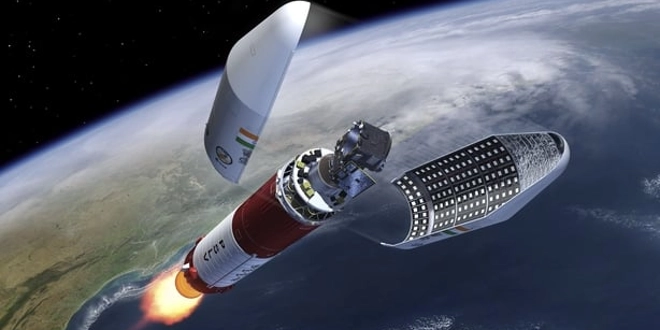A European Space Agency (ESA) mission set to launch later today will feature technology partly developed by a Cork-based company. The mission, known as Proba-3, will send two satellites into space to create the first-ever man-made solar eclipse. This eclipse will allow scientists to study the Sun’s inner corona, the outermost layer of its atmosphere, which is typically obscured by the Sun’s bright surface.
The two satellites will fly in perfect formation, with one satellite casting a shadow over the Sun, enabling the other to observe it. This formation flying, which requires extreme precision, has never been attempted by the ESA before. The satellites will travel at 22,000 mph with a precision of just 1 millimeter, a feat made possible by technology developed by Onsemi, a US-based sensor and semiconductor company with a Cork office. Onsemi acquired the Cork-based startup SensL in 2018.
The precision of the satellites’ formation is achieved using silicon photomultipliers (SiPMs), which enable them to maintain accurate alignment during the mission. Dr. Steven Buckley, Onsemi’s lead engineer for the project, is currently in Chennai, India, for the scheduled launch at 10:38 am Irish time.
Dr. Buckley explained that one satellite, shaped like a disc, will create a perfect eclipse of the Sun. About 150 meters away, the other satellite will house a coronagraph—a specialized camera used to study the corona. The challenge lies in the fact that a 150-meter pole cannot be placed in space, so two satellites must align precisely to achieve this effect.
The alignment of the satellites is crucial, as even a small deviation could cause issues. To monitor this, Onsemi has developed four light sensors that measure the light levels during the eclipse. These sensors convert the light levels into electrical signals, which are then processed digitally. An algorithm analyzes these signals and adjusts the satellites to maintain their precise alignment, ensuring they stay within a millimeter of accuracy as they travel at 22,000 miles per hour.
The project has been seven years in the making, with Dr. Buckley reflecting on the excitement of working on such an ambitious mission. Having previously worked on NASA projects, he finds it especially thrilling to be directly involved in the creation of a mission that will be launched into space.
Following the launch, the first four months will be dedicated to commissioning the satellites. After this, the satellites will enter an orbit that will allow them to monitor the Sun for up to two years. The orbit will be highly elliptical, lasting 20 hours, with the satellites reaching altitudes ranging from 600 km to 60,000 km. The formation flying will occur for up to six hours at a time during the orbit.
The data collected by the mission will not only deepen our understanding of the Sun but also help predict solar weather, such as solar storms or coronal mass ejections, which can disrupt communication networks and power grids on Earth.
Asked whether he felt nervous about the launch, Dr. Buckley expressed confidence in the mission’s success. He noted that the technology had been thoroughly tested on the ground and was fully expected to perform well in space. However, he also described the experience as emotionally significant, comparing it to watching the birth of a child.
 The Daily Star Ireland
The Daily Star Ireland

